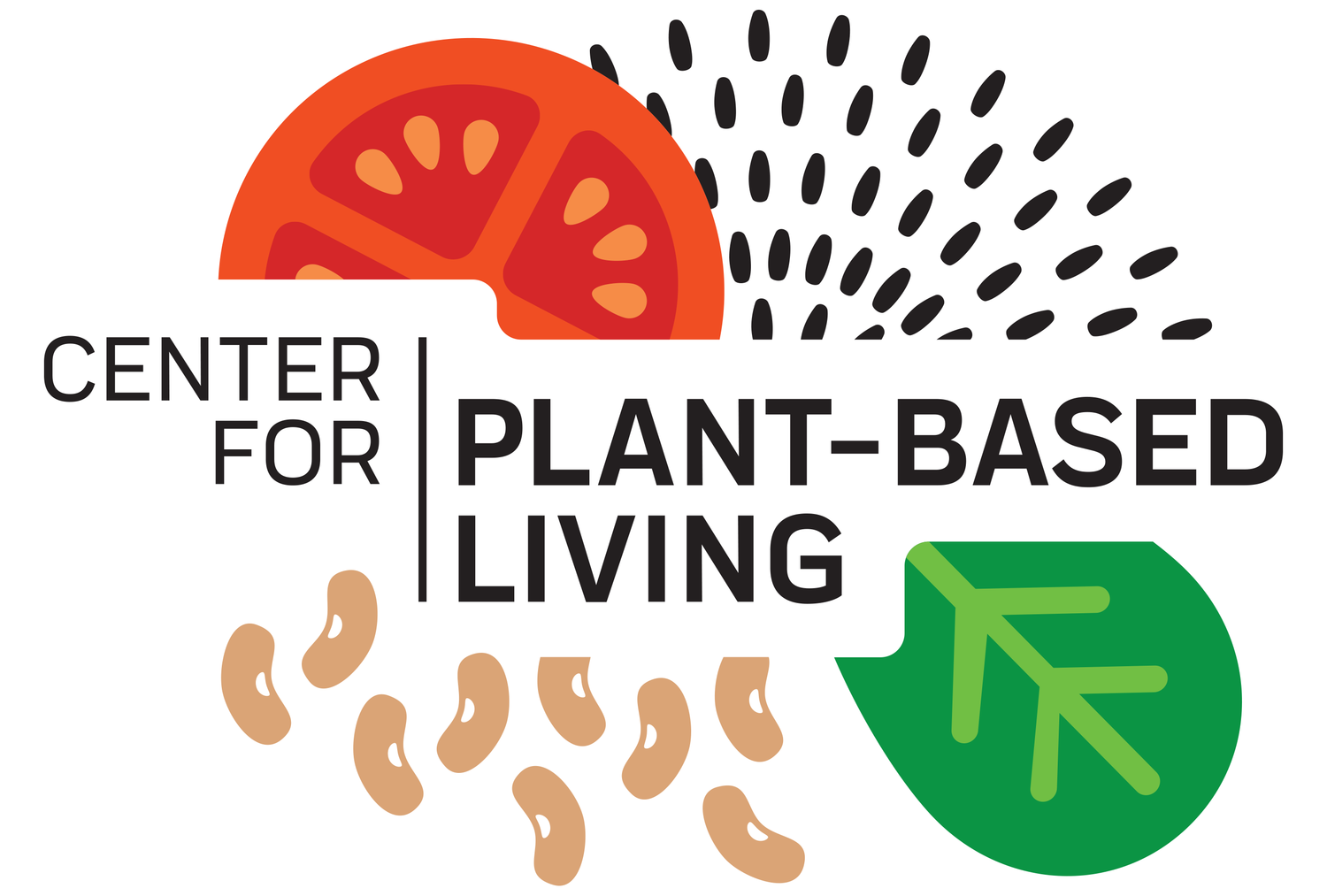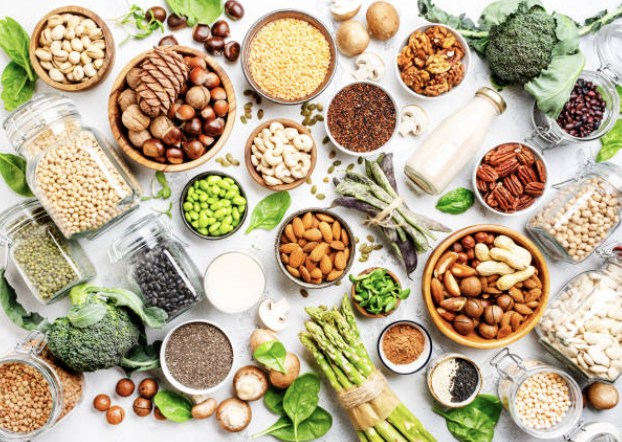Breaking bones and blending beans.
About a year ago, my 77-year-old mom broke her arm. She’s vibrant, happy, and the life of the party, but this unexpected event sidelined her. I knew we had to focus on healing quickly so she could get back to doing what she loves. Having been immersed in nutrition since 2008, I’ve always loved geeking out over how food impacts our health. We all know calcium is important for strong bones, and some may even know that vitamins K and D are equally essential for bone health—but I wanted to go deeper.
I dove into learning everything I could about these nutrients and how to turn that knowledge into practical, food-based solutions. Getting enough calcium and vitamin K from food is actually pretty simple, but here’s the thing: my mom isn’t one to spend much time cooking. I knew I had to get creative. With her needing at least 1,200 milligrams of calcium daily, I figured a nutrient-packed smoothie she could easily sip throughout the day might be the perfect solution. Since calcium is so abundant in plant-based foods, I knew the rest of her meals would fill in the gaps.
So, I made a plan and got to work. I stocked her fridge with everything she’d need and started making smoothies every other day. Each time, I blended two single-serving calcium-rich smoothies, and she quickly got into the groove of adding them to her routine. It was an easy, delicious way to support her healing—and before long, she was back to her vibrant self. Before long is right! Her doctors were incredibly impressed with how quickly she was healing!
Fast forward several months and I got some news about my own bones. I’m in this super fun phase of perimenopause, so I asked my doctor for a DEXA scan. There is a mountain of changes coming, bone health being one of them, so I wanted a baseline. I have never broken a bone and not being 50 yet, I knew I was not a candidate, but I dug my heels in and fought for it. Thankfully I did because it came back with some pretty disturbing results. Needless to say, I too now will drink one of these calcium smoothies if I’m not feeling particularily hungry or not wanting to cook. I have upped my strength training considerably and these make for great pre or post workout nutrition.
Most recently, a good friend of mine slipped and fell on the ice. Yep, now she’s getting my daily calcium rich smoothie! I take her 3 single dose smoothies every three days. Her broken and surgeried right arm in a sling, her left hand around a glass jar holding anywhere from 750-800 mg of delicious calcium! We’re looking at a solid three weeks of ice not yet melting here in St. Louis and there are a lot of people who have injured themselves (yours truly included) and I hope this post helps them to recover quickly if bones were broken.
Now, before we get to the star of the show, calcium, it is important to know just a little bit about how Vitamins K & D are needed for great bone health.
Vitamin K and vitamin D are an incredible duo when it comes to building strong bones and supporting healing after a fracture. Vitamin K activates the proteins that regulate calcium in your body, making sure it’s sent to your bones where it’s needed most instead of lingering in places like your arteries. This vitamin is key for proper bone mineralization and density, which can help prevent fractures in the first place and plays a vital role in the repair process when bones do break. For adults, the recommended amount of vitamin K is about 90 mcg per day for women and 120 mcg for men (both super easy to get!). You can find it in leafy greens like kale, collards, and spinach, as well as in broccoli, Brussels sprouts, and even fermented soy products like tempeh, which contains vitamin K2.
Vitamin D, on the other hand, helps your body absorb calcium from food and use it effectively for bone growth and repair. It also supports muscle strength, which is crucial for stability and avoiding further injuries. Most adults need about 600–800 IU of vitamin D daily, and while your body can produce it with sun exposure, plant-based sources like fortified plant milks, orange juice, and UV-exposed mushrooms are great dietary options. Together, vitamin K and vitamin D work synergistically: vitamin D helps you absorb calcium, and vitamin K ensures it gets where it needs to go. By making these nutrients a priority in your diet, you’re giving your bones the best possible foundation for healing and long-term health.
Why We Need Calcium
Calcium is essential for your body to function at its best. You probably know it’s key to strong bones and teeth, but it’s also critical for blood clotting and keeping your heart beating steadily.
What if I’m not eating dairy?
If you’re avoiding dairy due to lactose intolerance or a plant-based lifestyle, you might wonder how to get enough calcium. The good news? There are plenty of non-dairy foods that provide this important mineral—some even outshine milk in calcium content.
Plant-Based Sources of Calcium
1. Green Veggies
Leafy greens like kale are calcium powerhouses, offering about 175 milligrams of calcium in just one cup when cooked. That’s more than the calcium in half a cup of milk! Collard greens are a better option at 364 mg per cooked cup!
Cooking your greens boosts their calcium availability because it reduces oxalates—compounds in raw greens that bind to calcium and make it harder for your body to absorb. So, steaming or sautéing your greens can give you more bang for your bite!
Spinach and Swiss chard also contain a lot of calcium, but they’re especially high in oxalates, so their calcium isn’t as easily absorbed, but again, steam them to lower the oxalate content and make the calcium more bioavailable!
2. Tofu
Tofu made with calcium sulfate is a fantastic source of calcium. A typical half-cup serving can deliver over 340 milligrams of calcium! Not all tofu is created equal, though—check the label to see if it’s made with calcium sulfate for the highest levels. Even without it, tofu is still a solid option since it’s made from calcium-rich soybeans.
3. Beans
Beans do double duty for your health by providing both calcium and plant-based protein. Soybeans lead the pack with about 100 milligrams of calcium in just half a cup. Kidney beans, chickpeas, and white beans are also excellent options, offering 50–80 milligrams per half cup. Pair them with leafy greens for an even bigger calcium boost! Yeah, baby!
4. Nuts and Seeds
Almonds are one of the best nut sources of calcium, with about 75 milligrams in a small handful (roughly 1 ounce). Walnuts, hazelnuts, and Brazil nuts are also great choices to sprinkle into your diet.
Sesame seeds are tiny but mighty, with around 280 milligrams of calcium in just two tablespoons. Use them in dressings, sprinkle them on salads, or blend them into a creamy tahini sauce.
5. Fortified Foods and Drinks
Many everyday foods are fortified with calcium to help you meet your needs. Breakfast cereals, plant-based milks (like almond, soy, or oat), orange juice, and bread often have added calcium. Look for these options when grocery shopping, and be sure to shake plant-based milks before pouring—calcium can settle at the bottom!
Making the Most of Your Calcium
It’s not just about how much calcium you eat—it’s about how well your body absorbs it. Cooking certain foods, like kale and collards, reduces compounds that block calcium absorption, making the calcium more bioavailable. This is why I LOVE to steam my greens! I also end up eating a lot more because they cook down so much.
You also need enough vitamin D to help your body absorb calcium effectively. Get it through sunlight, fortified foods, or supplements if needed.
No dairy? No problem. By incorporating these calcium-rich foods into your meals, you can support your bones, teeth, and heart naturally—one delicious bite at a time.
To learn even more about calcium, where it comes from and why dairy sources are not always the best choice, check out this Doc & Chef episode! There’s a GREAT recipe in here, too!
Now, let’s punch up that calcium intake by making calcium-rich smoothies. Each one will weigh in at about 750-800 milligrams of calcium. Simply blend all ingredients until smooth and adjust for sweetness.
🤍 Tofu Calcium Boost Smoothie
1/2 cup silken tofu (170 mg calcium)
1 1/4 cup fortified almond milk or soy milk (350 mg calcium)
1 cup cooked kale (chilled) (175 mg calcium)
1 medium orange (peeled) (55 mg calcium)
1 medium banana (5 mg calcium)
1/2 cup frozen mixed berries (10 mg calcium)
🍫 Chocolate Calcium Smoothie
1/2 cup silken tofu (170 mg calcium)
1 1/4 cup fortified almond milk or soy milk (350 mg calcium)
1 frozen banana (5 mg calcium)
2 tablespoons unsweetened cocoa powder (40 mg calcium)
3/4 cup cooked kale (chilled) (130 mg calcium)
2 dates (30 mg calcium)
🍒 Cherry Chocolate Calcium Smoothie
1/2 cup silken tofu (170 mg calcium)
1 1/4 cup fortified almond milk or soy milk (350 mg calcium)
1 cup frozen cherries (20 mg calcium)
2 tablespoons unsweetened cocoa powder (40 mg calcium)
1 cup cooked kale (chilled) (175 mg calcium)
1 teaspoon vanilla extract (optional, for flavor)
1-2 dates (optional, for sweetness)
🍊 Calcium-Rich Green Smoothie (low-fat version)
1 ½ cups fortified almond milk or soy milk (450 mg calcium)
1 cup cooked kale (chilled) (175 mg calcium)
1 medium orange (peeled) (55 mg calcium)
1 medium banana (5 mg calcium)
1 tablespoon sesame seeds (140 mg calcium)
1/2 cup frozen pineapple (10 mg calcium)
🥬 Calcium-Rich Green Smoothie (extra calcium in this one!)
1 cup fortified almond milk or soy milk (300 mg calcium)
1 cup cooked kale (chilled) (175 mg calcium)
1 medium banana (5 mg calcium)
2 tablespoons almond butter (80 mg calcium)
2 tablespoons sesame seeds or tahini (280 mg calcium)
1/2 cup frozen mango (10 mg calcium)
1/2 cup water or ice (optional, for desired consistency)
🫐 Berry White Bean Smoothie
1 cup fortified almond milk or soy milk (300 mg calcium)
1/2 cup cooked white beans (80 mg calcium)
1 cup frozen mixed berries (20 mg calcium)
1 cup cooked kale, chilled (175 mg calcium)
1 tablespoon sesame seeds (140 mg calcium)
1/2 medium banana (2.5 mg calcium)
🍑 Peachy Vanilla White Bean Smoothie
1 1/4 cups fortified almond or soy milk (375 mg calcium)
1/2 cup cooked white beans (80 mg calcium)
1 cup frozen peaches (20 mg calcium)
1/2 cup cooked collard greens, chilled (130 mg calcium)
1 teaspoon vanilla extract
1 tablespoon tahini (65 mg calcium)
1/2 medium banana (2.5 mg calcium)
These are just few, the possibilities are seriously endless. Cheers to quick healing and happy bones!!
Many thanks to Fox 2 for having me on to share all of this information and make the Chocolate Cherry Smoothie!
Join our community and become a member!
Our membership is built like a streaming service - you get a full library of plant-based cooking classes to watch whenever you want. PLUS, you gain access to upcoming interactive virtual cooking classes and a monthly accountability group call.
As a member you get:
Complete library of all past virtual classes - stream them whenever you’d like!
Free access to upcoming virtual classes with both Chef Caryn and Dr. Loomis!
Library of easy and quick recipes: 150 and growing
Access to private Facebook group
Monthly accountability check-in and support group Zoom call with Caryn
Quarterly “Ask the Doc” call with Dr. Jim Loomis, our Medical Director
A community of support
To learn more, please visit us here.


